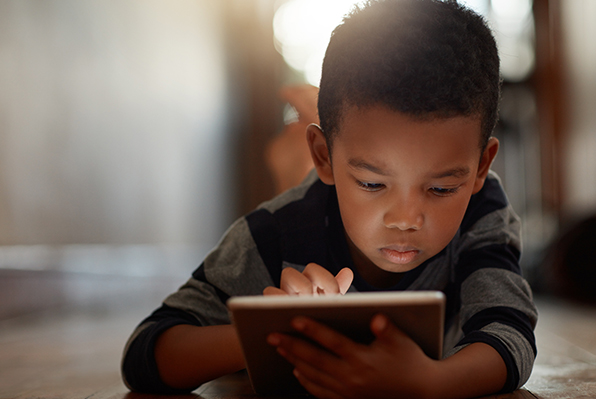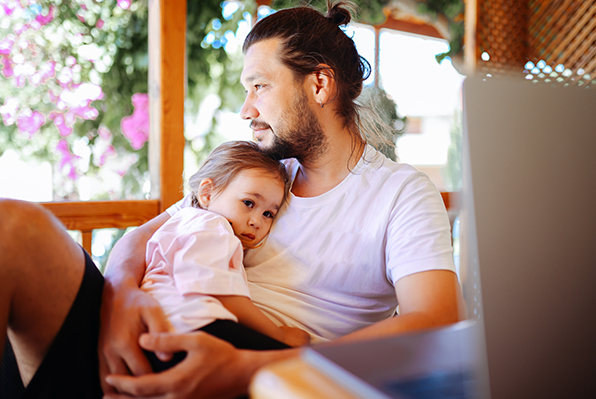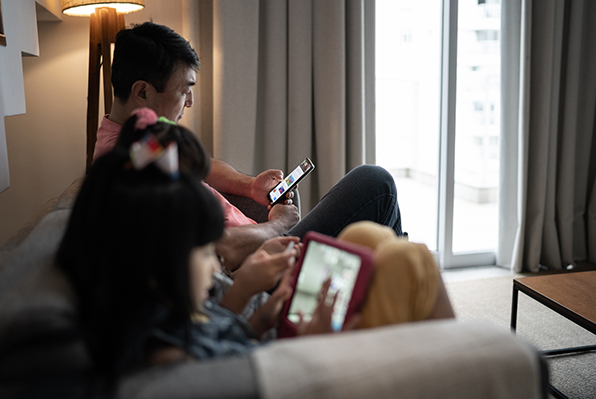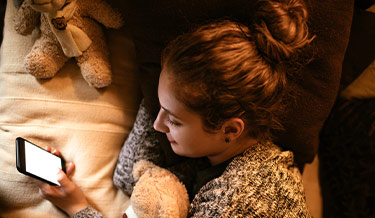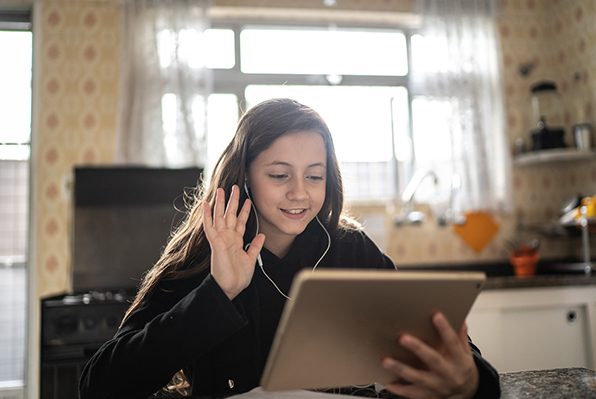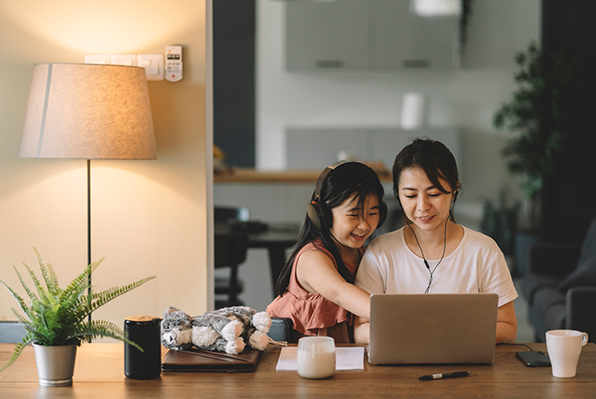


When we talk about keeping children and young people safe, the question that always comes up, “what are the actionable steps I can take?”
Below, we’ve expanded on what you’ve learnt from the Take Action page to provide you with additional steps you can take today to support and protect children and young people from online child sexual abuse and exploitation.
Action 1. Be interested in what children are doing, both online and offline.
Children and young people growing up today don’t know a world that exists without the internet. It’s a part of who they are, and how they live their lives. It’s a great tool for connection, learning and participation. The internet is so embedded in our lives that some children may not understand the difference between a friend they met at school, and a friend they met online.
As adults, we need to be aware of their lives, to help them be safe, grow up happily and healthily. This means that we need to be aware of what they are spending their time doing, and with whom – even when it’s less visible to us, because it’s on a small screen that lives in their pocket.
It’s important to be interested in what children and young people are spending their time doing, online and offline. We need to be aware of who they follow on social media, or who they chat to in online games. Have conversations with children about these things often and share with them the interesting people you are following. Learn how to play the games they play and use time with children to talk about the approaches you take to be safe online.
Being interested is a way of countering the messages that perpetrators use to manipulate and control children and young people. They are less likely to keep these exchanges to themselves if they feel like the adults in their safety circle are interested in the things they are generally interested in, especially online.
Action 2. Build your digital literacy
Do the children and young people in your life know more about the internet than you do?
Digital literacy involves having the skills to communicate and access information using digital technologies on the internet, including social media, online games, forums and other websites. It also means understanding how to the internet on a variety of devices including mobile phones, tablets and computers. What is really important is to understand risks to privacy and safety for ourselves and children and young people.
The Australian e-Safety Commission has created simple and valuable resources and information to help keep children and adults safe online. Their eSafety Guide is particularly useful.
Action 3. Help children and young people build their digital literacy
Building digital literacy is one of the most important ways we can keep children safe online. Here are some steps you can take to support the children and young people in your life.
STEP 1. Assess their knowledge
How well do they understand the mobile and other digital devices they are using? Do they understand the different platforms and apps they are using, and the possible risks to their privacy?
STEP 2. Dispel myths
Do they understand whether the information they are reading is reliable and can be trusted? Do they understand how people might behave online and how to identify safe and known people online?
Talk to children and young people about questioning the things they read and watch. Look at examples of trusted and accurate websites and talk about how to identify them.
STEP 3. Support them to understand more
Help children and young people develop ways of safely socialising with other people online, appropriate to their age and stage of development. Remember, the same rules should apply to any friend – online or offline.
Talk to children about the various platforms, games and apps they are using. Look at the privacy settings together and make sure you and they are confident in understanding the limits to their privacy.
Find opportunities to build digital literacy together. Children’s skills and knowledge should not be underestimated – they can teach you and you can teach them.
Action 4. Understand where you belong in the safety circles of children in your life.
Trusted relationships within which children and young people feel respected and valued are critical to keeping them safe. Think about all the children in your life. Where do you fit into their safety circle and how can you help children when they need it?
Create opportunities to check in with the children in your life regularly. Check in with other adults in the child’s safety circle. Stay connected, open and interested.
Action 5. Understand the risks of online child sexual abuse and exploitation
Online child sexual abuse and exploitation includes a wide range of behaviours and situations. Often children and adults alike may not realise they are at risk.
Online child sexual abuse and exploitation involves an adult:
- Engaging children in a conversation about sex or sexual acts online
- Encouraging children to share photos of themselves online
- Sending children naked images or videos of themselves or exposing themselves live on video
- Asking children to view pornographic images or videos online
- Asking kids to expose themselves online
- Taking, making and sharing sexual images of children on the internet
Learn more about the tactics of perpetrators.
Perpetrators use the vulnerabilities of children and young people against them by tricking, manipulating, and rewarding children in order to develop relationships that feel positive and trustworthy. Using the power and control they develop, perpetrators will pretend to be a friend, often of a similar age to gradually gain trust.
Over time, what began as a ‘friendship’ becomes more threatening as perpetrators use more power and aggression, sometimes with threats of blackmail, embarrassment or humiliation. Children and young people can become isolated from other relationships through fear of shame, potential trouble or harm to themselves or their family.
Action 6. Believe and validate
If a child or young person you know has experienced online child sexual abuse or exploitation, it is important to listen, believe and validate their call for support. Perpetrators may use tactics of manipulation to isolate children, convincing them that adults in their life will not believe them, will stop loving them, or will be hurt if they disclose what is happening to them. This is why it’s so important that we respond with support when a child or young person tells us something bad is happening to them.
Here are some critical things you can do:
- Always believe a child or young person when they tell you what is happening to them.
- Try to control your own feelings so that the child or young person doesn’t feel guilty, ashamed or responsible for upsetting you.
- Go slowly, letting them tell their story at their own pace to help them feel you have heard and understood.
- Let them know that it’s never their fault.
- Reassure them that you are there for them, offering whatever support they need.
While you might not have an answer to every question, it’s important to listen, be curious and aware. Acknowledge and validate the feelings shared, and even if things you hear shock you, you should always tell children and young people it’s okay to tell you anything – you’re there to help.
Here are some ways you can respond:
- Be open to listening – “I’m here to listen and to help”.
- Be non-judgemental – “You can tell me anything, I’ll always love you no matter what”.
- Validate and believe feelings – “I hear what you’re saying and how you’re feeling, I will help you”.
These responses and attitudes will help children and young people if they are being exposed to any risk, including online abuse or exploitation.
Action 7. Talk to others
It’s hard to contemplate that the children and young people in our lives could be at risk.
Doesn’t this sort of stuff only happen to other children, in other families, attending other schools, in other neighbourhoods?
In reality, all children and young people are vulnerable to risks online. Risks, don’t however, necessarily translate to them being in danger.
In order to protect children and young people from potential dangers, we need to make everyone aware of these risks. Share the information you learn with others and ask questions when you need to learn more.
It’s never too late to find out more. It’s never too late to talk to others who will share your worries, provide advice and offer reassurance. It’s never too late to start a conversation with the children in your life about their internet use.
It’s never too late to be there for children when they need us, no matter what has happened.
Action 8. Report abuse or concerns
It’s important that we know what to do if we are concerned that online child sexual abuse or exploitation may be happening.
If you believe a child or young person to be in immediate danger, call 000.
Anyone can report abuse or illegal activity online by using the Australian Federal Police online child sex exploitation form. Do not use this reporting form to report emergencies or concerns which require a high priority response.
You can also contact your local Child Protection authority.
It’s never too late to do something if you are worried. You don’t have to prove something is happening in order to take action, make a report to the police, or discuss your concerns with a trusted adult or professional.
Action 9. Know you can make a difference
We are not helpless to protect children and young people from these risks and dangers. We can act to protect them. Stay positive and hopeful knowing that you can make a difference in the lives of the children in your life. Together, we can make sure it’s never too late for any child to live a happy, safe and healthy life.
For a quick reminder of these actions, visit Take Action, save as a bookmark and share with your networks.
Australian Childhood Foundation is the leader in driving collective change in the care and protection of children and young people. Through our advocacy and education work we create active communities that can work together to provide better care for children, keeping them safe from harm and helping them heal in safe and loving relationships, restoring their childhoods.
To find out more about Australian Childhood Foundation, you can visit our website childhood.org,au. To find out why Australian Childhood Foundation is starting this conversation, visit the who we are page.
